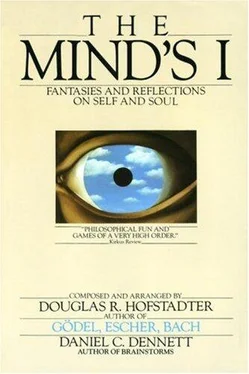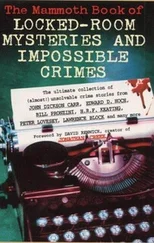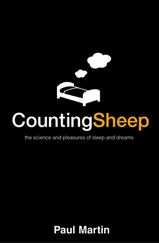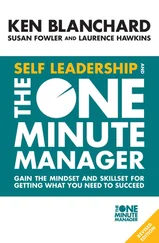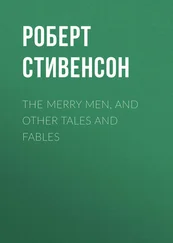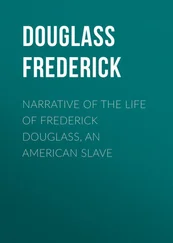“Martha Eat Now Martha Eat—”
“What would Martha like to eat?”
“Martha eat Now—”
“Would Martha like Candy?”
“Candy Candy Yes Can—”
He reached in and handed her a banana, which the animal adroitly grasped, peeled, and stuck into her mouth. Once while she was eating, Belinsky turned her on for a moment, catching parts of an endless “Happy Martha” readout that appeared to startle the chimp slightly. When done, she faced the judge again, opening and closing her mouth soundlessly until her handler switched on the audio. “Good Banana Good Banana Thank you Man Candy Now Candy Now.”
Pleased with his results, Feinman reached into the box and offered the requested treat. She took it, but instead of eating it immediately, Martha again pointed to Belinsky’s switch box, indicating that she wanted to be heard.
“Cigar Cigar Martha Want Cigar—”
The judge found the cigar and held it out. She took it, sniffed at it a moment, then handed it back. “Nice Nice Man Eat Belinsky Cigar Thank You Thank You Man—”
The judge was both fascinated with the creature’s intelligence and charmed by her childlike simplicity. The animal sensed his affection and returned it, to the delight and entertainment of the court. But Hunt did not want to prolong this, and after a few minutes of interspecies conversation, he interrupted.
“Perhaps I should proceed with the testimony, your Honour?”
“Yes, of course,” the judge agreed, reluctantly handing over the animal, who had by this time joined him on the bench.
“Doctor Belinsky,” Hunt continued after Martha had settled down, “could you briefly state your scientific conclusions regarding the intelligence of this animal?”
“Her mind differs from ours,” the scientist said, “but only in degree. Our brains are larger and our bodies are more adaptable, consequently we are superior. But the difference between us may yet prove to be embarrassingly slight. I believe that Marta, deficient as she is, still possesses humanlike intelligence.”
“Could you draw some clear dividing line between the mentality of her species and ours?”
“No. Clearly she is inferior to the normal human. Yet Martha is unquestionably superior to deficient humans at the idiot level, and a peer to most imbeciles. She has an added advantage in that she is cleaner and can care for herself and offspring, which idiots and imbeciles cannot do. I would not wish to make clear-cut distinctions between her intelligence and ours.”
Hunt did not ask his next question immediately. He had, of course, planned this experiment with the researcher beforehand. To complete the testimony he was to request one more demonstration, which by its nature could not have been practiced. But he was not sure that Belinsky would go through with it as planned. In fact he was not entirely sure he himself wanted the demonstration performed. Yet, there was a job to do.
“Doctor Belinsky, does the humanlike intelligence of this creature merit corresponding humanlike treatment?”
“No. We treat all laboratory animals decently, of course, but their value lies only in their experimental potential. Martha, for example, has already outlived her usefulness and is scheduled to be destroyed shortly, for the cost of her upkeep is greater than her experimental value.”
“How do you go about eliminating such an animal?” Hunt asked.
“There are a variety of quick and painless methods. I prefer an orally administered poison contained in a favourite food and given unexpectedly. Although that may seem a cruel trick, it prevents the animal from anticipating its fate. The fact of death is inevitable for all of us, but for these simple creatures at least, the fear of it need never reach them.” As he spoke, Belinsky extracted a small piece of candy from his coat pocket.
“Would you demonstrate this procedure before the court?” Hunt asked.
As the scientist offered the candy to the chimpanzee, Feinman finally realized what was being done. He voiced an order to halt the deadly experiment, but too late.
The researcher had never personally destroyed one of his animals before, always leaving the task to assistants. As the unsuspecting chimpanzee placed the poisoned gift into her mouth and bit, Belinsky conceived of an experiment he had never before considered. He turned on the switch. “Candy Candy Thank you Belinsky Happy Happy Martha.”
Then her voice stopped of its own accord. She stiffened, then relaxed in her master’s arms, dead.
But brain death is not immediate. The final sensory discharge of some circuit within her inert body triggered a brief burst of neural pulsations decoded as “Hurt Martha Hurt Martha.”
Nothing happened for another two seconds. Then randomly triggered neural discharges no longer having anything to do with the animal’s lifeless body sent one last pulsating signal to the world of men.
“Why Why Why Why—”
A soft electrical click stopped the testimony.
At the office in the morning and did business. By and by we are called to Sir. W. Battens to see the strange creature that Captain Holmes hath brought with him from Guiny, it is a great baboone, but so much like a man in most things, that (though they say there is a Species of them) yet I cannot believe but that it is a monster got of a man and she-baboone. I do believe it already understands much English, and I am of the mind it might be tought to speak or make signs.
—The Diary of Samuel Pepys August 24 1661
The pathetic noncomprehending cry of the dying chimp evokes in us powerful sympathy—we can identify so easily with this innocent and enchanting creature. What though, is the plausibility of this scenario? Chimp language has been a controversial are for over a decade now. While it appears that these and other primates can absorb numerous vocabulary items—up to several hundred, in fact—and even on occasion come up with ingenious compound words, it is far less well substantiated that they can absorb a grammar by which they can combine words into complex meaning-carrying propositions. It seems that chimps may simply use arbitrary juxtapositions of words rather than syntactic structures. Is this a severe limitation? In the eyes of some it is, for it puts a strict upper bound to the complexity of ideas that can be expressed thereby. Noam Chomsky and others maintain that that which is essentially human is our innate linguistic ability, a sort of “primal grammar” that all languages would share at a sufficiently deep level. Thus chimps and other primates not sharing our primal grammar would be essentially different from us.
Others have agreed that the primates who—or do I mean “that”?—give the appearance of using language are doing something very different from what we do when we use language. Rather than communicating—that is, conveying private ideas into the common currency of signs in patterns—they are manipulating symbols that to them have no meaning, but whose manipulations can achieve desired goals for them. To a strict behaviourist, this idea of distinguishing between external behaviours on the basis of hypothetical mental qualities such as “meaning” is absurd. And yet such an experiment was once carried out with high-school students instead of primates as the subjects. The students were given coloured plastic chips of various shapes and were “conditioned” to manipulate them in certain ways in order to obtain certain rewards. Now, the sequences in which they learned to arrange the chips in order to get the desired objects could in fact be decoded into simple English requests for the objects—and yet most of the students claimed to have never thought of matters this way. They said that they detected patterns that worked and patterns that didn’t work, and that was as far as it went. To them it felt like an exercise in meaningless symbol-manipulation! This astonishing result may convince many people that the chimp-language claims are all wishful thinking on the part of anthropomorphic animal lovers. But the debate is far from settled.
Читать дальше
